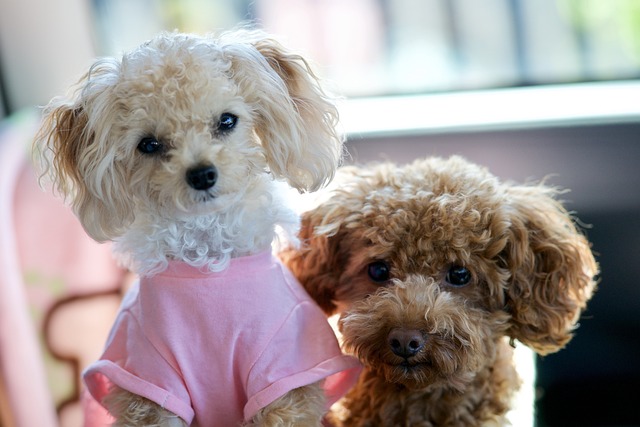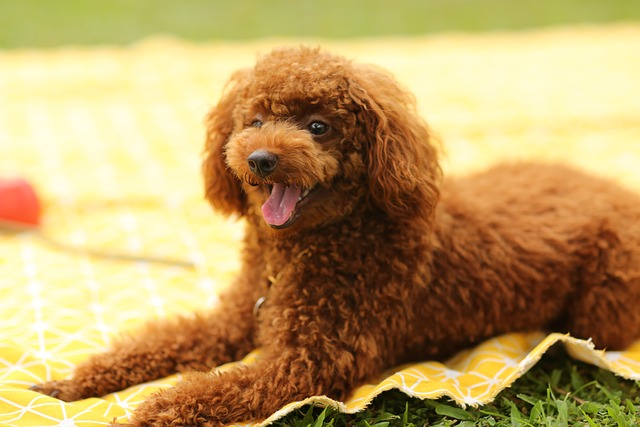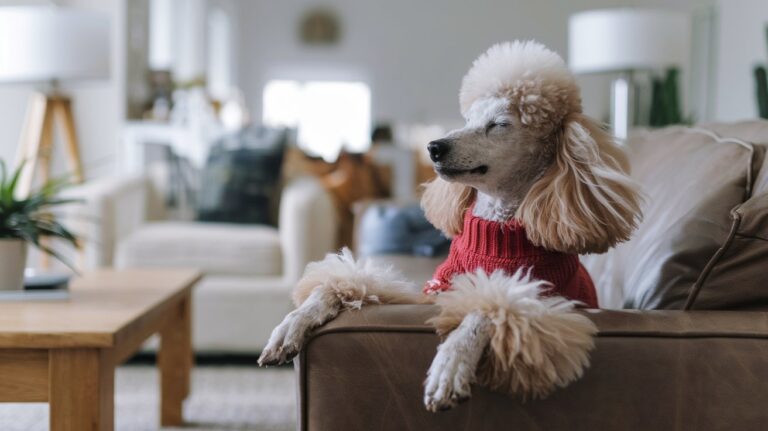Do poodles really like to cuddle? Of course! Poodles are these smart dogs, which have affection for their owners. Therefore, in addition to finding out why poodles like cuddling along with the reasons that make them clingy, we shall also learn more about how it strengthens human relations with them. Poodles are famous for their smartness, barking and grace; however, many individuals are left in amazed with the extent of their affection. Get to know some of the ways these cute creatures show affection towards their owners as well as why cuddling plays such an important role in connecting them together.

Poodles are very clever, and most times they are very affectionate with the family, their fancy appearance not with standing. Many poodles like staying close to people. Poodles are people-oriented dogs who can be used as guard dog because they bark alot and are clever. They form strong bonds with their families. Individual personalities vary. Some are more cuddly than others
It’s important to note that all poodles are different in their own way. Physical affection means something different to each person, and it is no different with dogs. There are those poodles who would want to lie on the lap all day long, but others prefer expressing their care towards owners in a little more sophisticated manner.
How a Poodle’s Affection Levels Are Affected
Several factors can influence how cuddly your poodle might be:
- Upbringing: Poodles raised in loving, affectionate environments are more likely to be cuddly.
- Socialization: Early positive experiences with humans can increase a poodle’s comfort with physical affection.
- Age: Younger puppies may be more energetic, while older ones might appreciate longer cuddle sessions.
- Size: Toy and miniature poodles often enjoy being lap dogs more than their larger standard cousins.
- Past experiences: Rescue poodles might need time to warm up to physical affection.
- Health: Discomfort or pain can make a poodle less interested in cuddling
Understanding these factors can help you better interpret your poodl’s behavior and respect. Also their boundaries when it comes to physical affection.
How Poodles Show Loving and Appreciation
Poodles show love and affection in a way that is distinct to themselves. Some may prefer to cuddle, while others use rudimentary behaviors to show fondness.
- Following you around the house (like a fluffy shadow)
- Leaning against you when sitting or standing
- Bringing you their favorite toys
- Gentle nose nudges or paw taps for attention
- Wagging their tail in your presence
- Sleeping near you or on your feet
Understanding these indications can help you acknowledge the affections displayed by your poodle even when they are not always in the mood for a cozy moment.
Poodle Assortments and Their Cuddle Preferences
Poodles come in three sizes, and each may have slightly different cuddling tendencies:
- Standard Poodles: Even though they are bigger, poodles usually like laying their heads on your knees or leaning on you, though they do not really fit on your lap. Also, for lap dogs, they may attempt being one because of their size!
- Miniature Poodles: These dogs are medium-sized, which makes ‘em quite affectionate, meaning that they instead love to stay near their owners while at the same time they prefer to rest on someone’s lap.
- Toy poodles: The small loving bug typically loves to spend time alongside you or on your thighs during hours of affectionate play. They do well as warm company given their littleness.
Keep in mind that a poodle’s cuddliness is always influenced by its personality, not by these general tendencies.

Help Your Poodle To Feel More Loved
You really shouldn’t try to force a poodle to be affectionate, but you can nudge other cuddly mannerisms in her direction:
- Create positive associations: Make cuddle time fun with gentle petting and soothing words.
- Respect boundaries: Don’t force physical contact if your poodle seems uncomfortable.
- Be consistent: Regular bonding time helps build trust and affection.
- Start slowly: If your poodle isn’t used to cuddling, begin with short sessions and gradually increase duration.
For your poodle to enjoy being touched physically, always let them associate such encounters with good things. Eventually, some poodles will get used to resting close to people through time as well as remaining patient. Poodle curdiness is influenced by early socialization.
The early socialization process is essential when it comes to making sure that a poodle is comfortable with physical closeness. By introducing a poodle puppy to different people, situations, and gentle touch, you can facilitate its development into self-assured and tender-hearted adults.
- Introduce your puppy to different people, including children (under supervision).
- Encourage gentle petting and handling from an early age.
- Make socialization experiences positive with treats and praise.
- Attend puppy classes for structured socialization opportunities.
Remember that socialization continues over time and always show your poodle different positive experiences in order for it to continue to have good social skills and remain comfortable with affections.
Contrasting Poodles; Fondness with Different Varieties
Poodles can be loving dogs, but they are usually less affectionate than other breeds. Here is how they differ:
- Golden Retrievers and Labradors: Generally more outwardly affectionate and in your face with their love
- Chihuahuas often form intense bonds with one person, while poodles tend to spread their affection among family members.
- German Shepherds: Like poodles, they're intelligent and can be affectionate but may be more reserved with strangers.
- Cavalier King Charles Spaniels: Known for being extremely cuddly, possibly more so than the average poodle. Poodles often express their love subtly by being silent near the person or giving a soft paw.
Making a Bond: Building Trust with Your Poodle
Faith is the base of all good connections, including the one with your pet dog. Below are some tips to strengthen the bond:
- Poodles require regular grooming, which can be a wonderful way to build a relationship with them.
- Training sessions can be a fun way to connect with poodles because they are intelligent and enjoy mental stimulation.
- Recess: Take part in games your poodle appreciates, similar to get or find the stowaway.
- Calm time together: Some of the time simply being in a similar room is sufficient to fortify your bond.
- Consistent care: If you give your poodle regular attention, walks, and food, it will feel more secure in your relationship.
Remembering that it requires investment to fabricate trust, one ought to ensure that they are patient and reliable during their collaboration with their poodle.
The Health Benefits of Cuddling Your Poodle
Hugging is more than just fun; it’s good for you and your pet poodle! Here are some health benefits of snuggling with your furry puppy:
- Stress decreases: Petting and snuggling a canine can bring down stress.
- Lower blood pressure: It has been demonstrated that interacting with dogs lowers blood pressure.
- Actual contact with pets can support serotonin and dopamine, further developing temperament.
- Relief from discomfort: The solace of a canine’s presence can really assist with diminishing apparent torment levels.
- Better rest: Having a canine close by can assist certain individuals with having a solid sense of safety and resting better.
Conclusion
Affectionate poodles often like to cuddle to connect with people. They are smart and sociable, which makes them great friends, and cuddling gives them a feeling of being safe and comfortable. If you want your poodle to be close and cuddly, you should provide a cozy home, keep away when it cares, and show approval.
Remember, every poodle has its own personality, so look out for its specific strengths and weaknesses. By acknowledging and encouraging your poodle’s warm spirit, you can develop stronger ties with them and have pleasure in the kind of friendship and coziness that is found in these breeds. Be it as simple as hugs while relaxing in the living room or just lying down vtogether in leisure time, there is nothing more fulfilling than petting such dogs.

